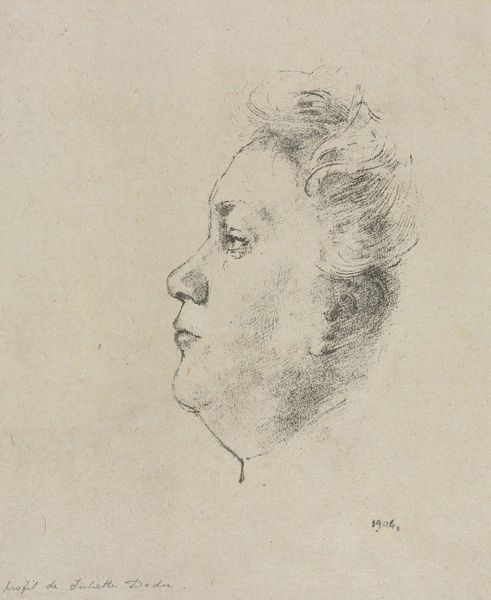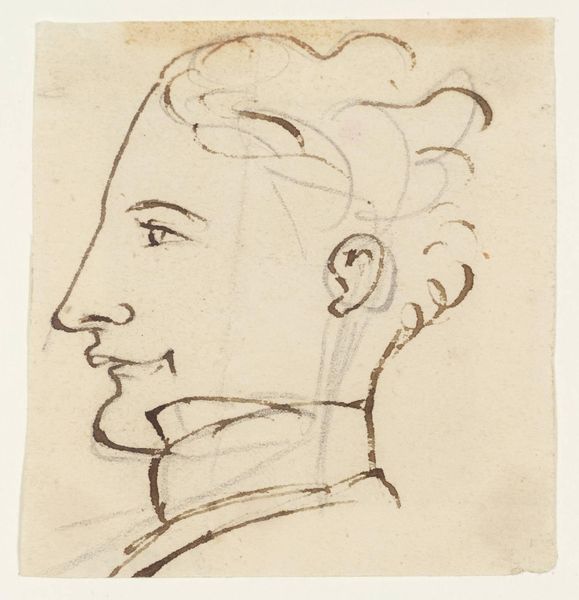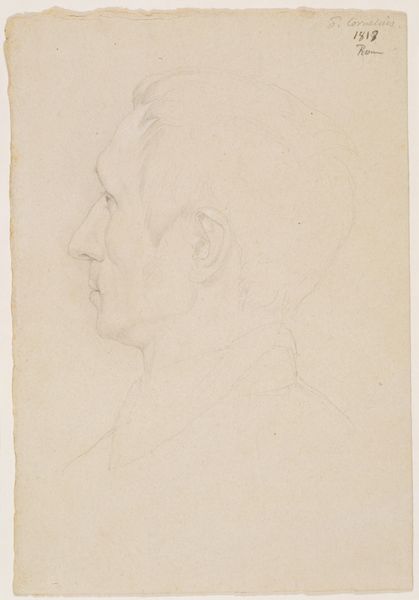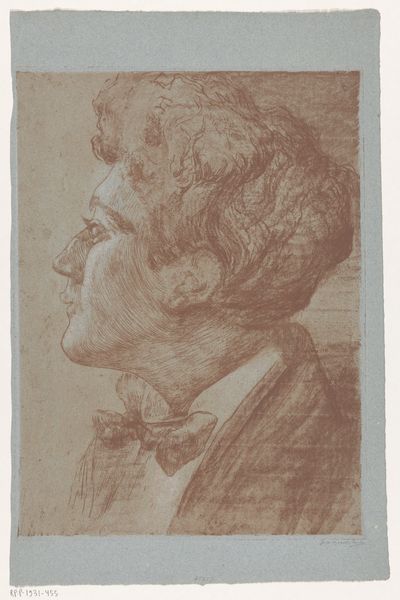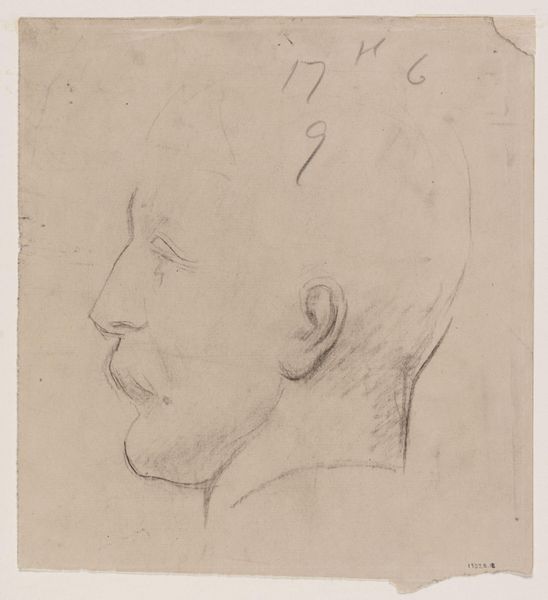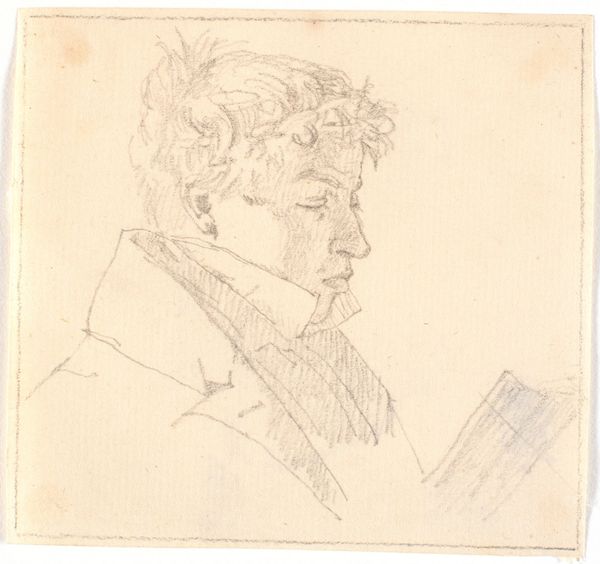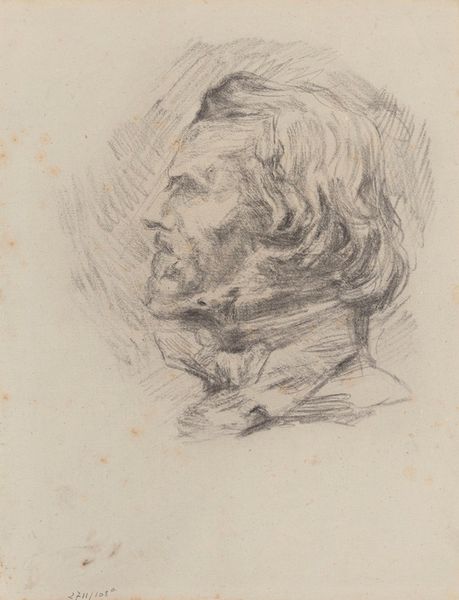
drawing, pencil
#
portrait
#
drawing
#
pencil
#
realism
Dimensions: height 136 mm, width 144 mm
Copyright: Rijks Museum: Open Domain
Curator: Well, hello there! Today we’re gazing upon an unassuming yet captivating sketch: *Portret van onbekende* - Portrait of an unknown person - created sometime between 1875 and 1895 by Johan Michaël Schmidt Crans. It's a simple pencil drawing, but…it speaks. Editor: It does indeed. It has this quiet intimacy. The first impression for me is how much character comes through despite the medium being just pencil on paper. There’s a sense of… contemplation about this person. Curator: Absolutely, there's a powerful evocation here! Realism as it breathes! I love that Crans chose such a seemingly ordinary subject, focusing intently on the lines of the face. Think about who this man might be. What stories were etched onto his very face? Editor: I think what’s so fascinating about portraits of "unknown" individuals is precisely the opportunity they present to project our own narratives. The lack of specific context, I find, it almost frees the viewer. This work could say less about this sitter's reality than about its place in a much longer tradition of academic practice and artistic observation. How often did these studies serve only to practice form? How many became autonomous portraits with their own value? Curator: A question for time, isn’t it? Perhaps Crans wasn’t aiming for posterity. But the very act of drawing, the intense gaze required... it imbues this study with a lingering sense of importance. Those small acts give meaning to existence! And there are the gentle marks made by Crans – you can sense him breathing in this man’s essence, don't you think? Editor: I do, in its own delicate way. The drawing embodies the academic atmosphere of its era, while suggesting all kinds of narratives beyond its reach, about the individual we look at and about artistic creation as an intrinsically political endeavor. A testament to that! Curator: Yes! He seems someone dear… or perhaps once was. That memory then stays alive. This is a piece to simply exist *with*. It invites quiet reflection. Editor: Absolutely. It certainly challenges us to reconsider portraiture and realism and their place between objectivity and affection, and that’s a beautiful conversation to engage in.
Comments
No comments
Be the first to comment and join the conversation on the ultimate creative platform.

